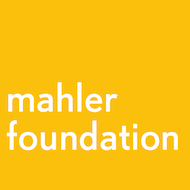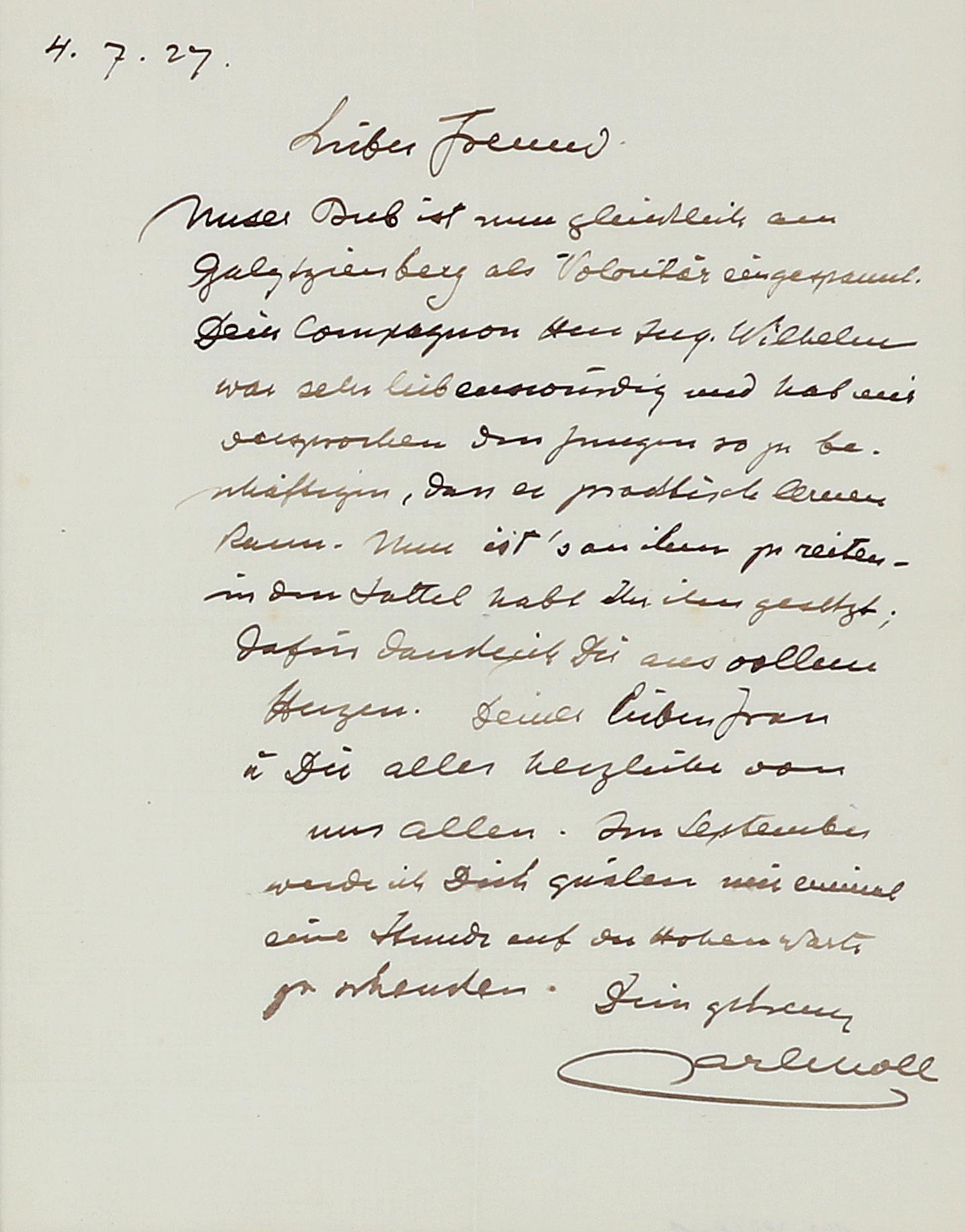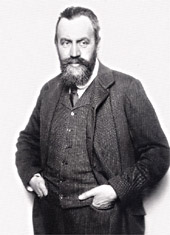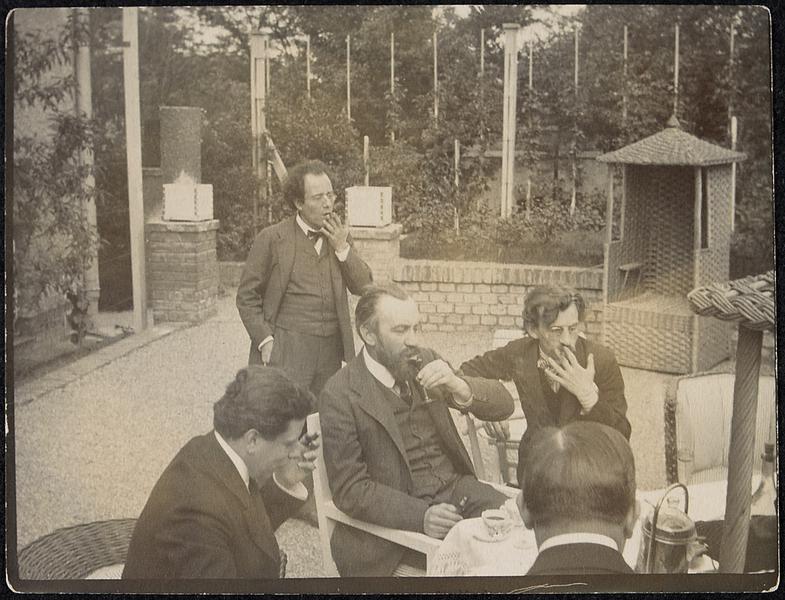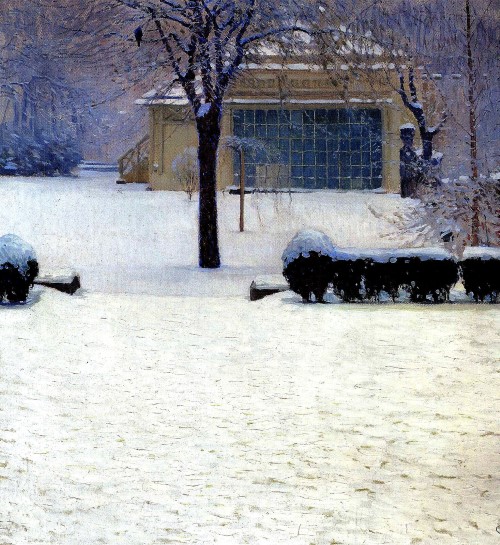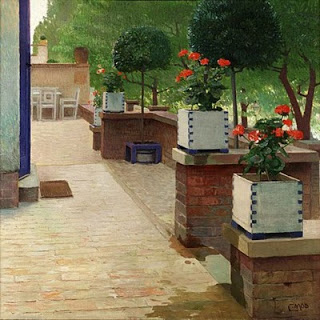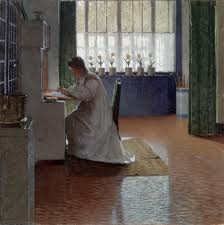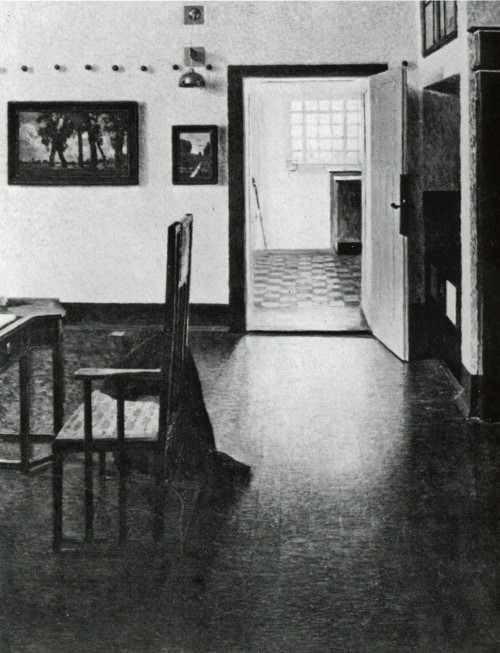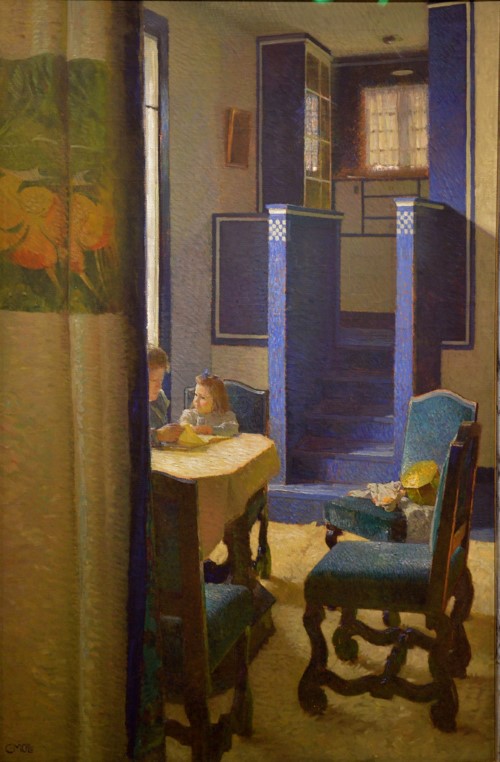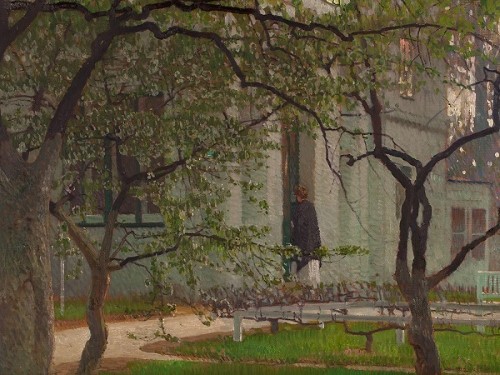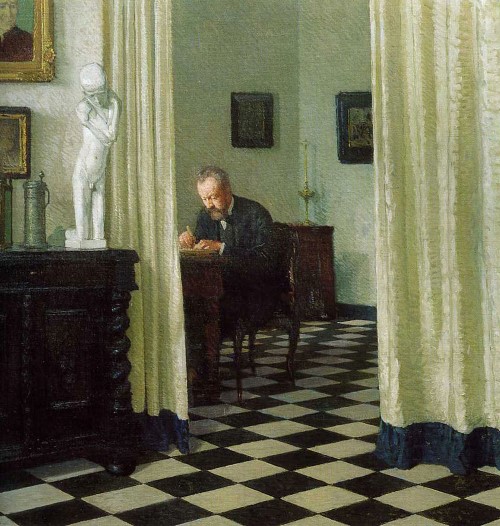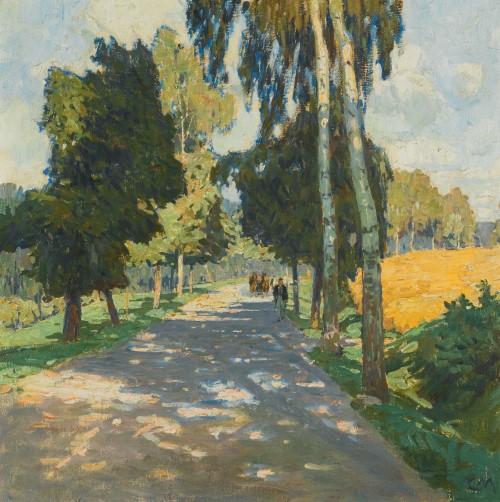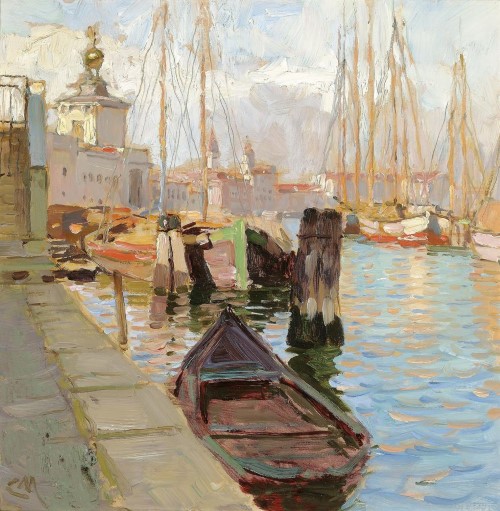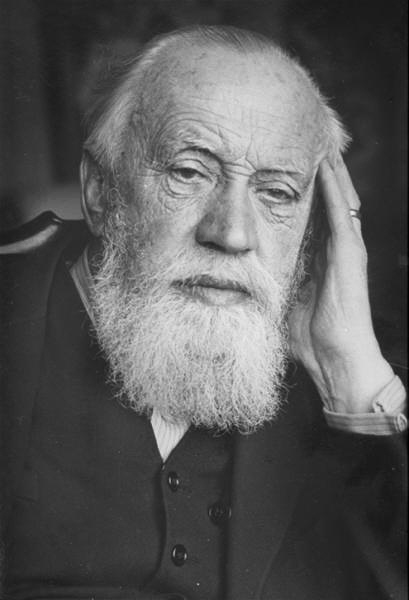Personal Information

|
||
|
Name
|
Carl Julius Rudolf Moll

|
|
| Born | 13/04/1945 | Vienna |
| Gender | ♂️ Male | |
Spouses ( 1 )
|
Spouse
|
Anna Sofie Moll-Schindler-Bergen | |
Events
📍 Vienna
Additional Information
|
Additional Info
Carl Julius Rudolf Moll (1861-1945). Also: Karl. Relation to Gustav Mahler (1860-1911): Step father in law through his wife Alma Mahler (1879-1964).
Painter, graphic artisy and co-founder of the Vienna Secession (association). His experience with the Academy of Fine Arts in Vienna was brief as a serious illness interrupted his studies an resulted in severe hearing loss that plagued him for the rest of his life. While he greatly admired Hans Makart (1840-1884) during his time at the Academy, the work of landscape painter Jakob Emil Schindler (1842-1892) (which Moll first saw at an exhibition of the Viennese Kunstlerhaus (1881)) had the greatest influence on his career. Moll was Schindler's private student and collaborator for eleven years. Several years after Schindler's death, he married Schindler's widow, singer and actress Anna Sofie Moll-Schindler-Bergen (1857-1938). Anna's daughter from her marriage with the late Schindler was Alma Mahler (1879-1964) with whose husband Gustav Mahler (1860-1911) Carl Moll later established a close relationship. He also made Mahler's Death mask in 1911. While his work greatly evolved over his long life, during the Vienna Secession it was characterized by paintings with a muted atmosphere rendered in subdued tones and influenced by French impressionism and pointillism in ther articulate brushwork. A leitmotif of this period was the artist's villa, House Carl Moll I Vienna - Steinfeldgasse No. 8, which Josef Hoffmann (1870-1956) designed for him and the artist Koloman Moser (1868-1918). It became the first completed house in the villa colony om the Hohe Warte hill in Vienna (1901). See: Hohe Warte district map. Moll was the most active organizer of the Vienna Secession group and served as its President in Year 1901. The close contacts with the Miethke Gallery, where Moll worked as an artistic supervisor (starting from Year 1904), and his effort to make this gallery a commercial platform for the Vienna Secession, were among the factors that caused the group to split into factions, resulting in the departure of the artists associated with Gustav Klimt (1862-1918), including Moll. Galerie Miethke was founded in 1861 by Hugo Miethke, from 1895 located at Dorotheegasse 11. It was run by Carl Moll and Paul Bacher (a friend of Klimt, whose exhibition there in 1910 marked a turning point in his career). Center for modern art, exhibiting works of the Secession movement, Jugendstil and the Wiener Werkstatte.
04-07-1927 Letter by Carl Julius Rudolf Moll (1861-1945) probably about Wilhelm (Willy) Carl Emil Legler (1902-1960). "Lieber Freund. Unser Bub ist nun glücklich am Galitzinberg als Volontär eingespannt. Dein Compagnon Herr Ing. Wilhelm war sehr liebenswürdig und hat mir versprochen den Jungen so zu beschäftigen, dass er praktisch lernen kann. Nun ist's an ihm zu reiten - in den Sattel habt ihr ihn gesetzt; dafür danke ich Dir aus vollem Herzen. Deiner lieben Frau und Dir alles herzliche von uns allen. Im September werde ich Dich quälen mir einmal eine Stunde auf der Hohen Warte zu schenken. Dein getreuer Carl Moll". Carl Moll and the Nazis Carl Julius Rudolf Moll (1861-1945) had a daughter Maria Eberstaller-Moll (1899-1945). She was married to a Nazi Richard Eberstaller (1887-1945) who was the vice president of the Nazi Court in Vienna from 1938 to 1945. He made Carl Moll support the Nazis after Hitler seized power in Germany. In a letter to Carl Moll Alma Mahler (1879-1964) praised Hitler as the "great organizer". Carl Moll was never a party member. His daughter Maria Eberstaller-Moll (1899-1945) and son-in-law Richard Eberstaller (1887-1945) were.
Carl Julius Rudolf Moll (1861-1945).
Carl Julius Rudolf Moll (1861-1945). Year 1905. Vienna. Garden House Carl Moll I Vienna - Steinfeldgasse No. Gustav Mahler (1860-1911), Max Reinhardt (1873-1943) (his back to the camera), Carl Julius Rudolf Moll (1861-1945) and Hans Pfitzner (1869-1949).
Year 1905. Vienna. Garden House Carl Moll I Vienna - Steinfeldgasse No. 8. Max Reinhardt (1873-1943), Gustav Mahler (1860-1911), Carl Julius Rudolf Moll (1861-1945), Hans Pfitzner (1869-1949) and Josef Hoffmann (1870-1956) (his back to the camera). Year 1905. Vienna. Garden House Carl Moll I Vienna - Steinfeldgasse No. 8. Unknown person, Carl Julius Rudolf Moll (1861-1945), Gustav Mahler (1860-1911) and Alfred Roller (1864-1935) (standing in front of Gustav Mahler).
Before Year 1903. Carl Julius Rudolf Moll (1861-1945). Snowbound studio in Theresianumgasse. Year 1903. Carl Julius Rudolf Moll (1861-1945). "Winter (Hohe Warte in Vienna)". Woodcut in colors. See: Hohe Warte district map.
Year 1903. Carl Julius Rudolf Moll (1861-1945) - Hausgarten. Hohe Warte, Vienna. House Carl Moll I Vienna - Steinfeldgasse No. 8.
Year 1903. Carl Julius Rudolf Moll (1861-1945) - Anna Sofie Moll-Schindler-Bergen (1857-1938) in the living room at Hohe Warte, Vienna. House Carl Moll I Vienna - Steinfeldgasse No. 8.
Year 1903. Carl Julius Rudolf Moll (1861-1945): Study - Wollergasse 10 (Villa Moll II), Hohe Warte, Vienna. House Carl Moll I Vienna - Steinfeldgasse No. 8.
Year 1903. Carl Julius Rudolf Moll (1861-1945) - Salon Hohe Warte, Vienna. House Carl Moll I Vienna - Steinfeldgasse No. 8. Anna Sofie Moll-Schindler-Bergen (1857-1938) and Maria Eberstaller-Moll (1899-1945).
Year 1905. Carl Julius Rudolf Moll (1861-1945). House Carl Moll I Vienna - Steinfeldgasse No. 8. Year 1905. Outside the House. House Carl Moll I Vienna - Steinfeldgasse No. 8. Year 1905. Outside the House. House Carl Moll I Vienna - Steinfeldgasse No. 8. Signature.
Year 1906. Carl Julius Rudolf Moll (1861-1945) - The artist in his studio at Hohe Warte, Vienna. House Carl Moll I Vienna - Steinfeldgasse No. 8.
1916. Carl Julius Rudolf Moll (1861-1945).
1926. Carl Julius Rudolf Moll (1861-1945) - Venice, Zattere.
1936. Carl Julius Rudolf Moll (1861-1945). 2018. Moll family grave, Grinzing cemetery, Vienna, Austria. Latest Die Verlassenschaftsabhandlung gestaltete sich besonders schwierig, da man im Hinblick auf die untereinander zerstrittenen Erben juristisch feststellen musste, wer vor- und wer nachverstorben war; wer also wen – wenn auch nur für die allerkürzeste Zeit – beerbt hatte. Das Ehepaar Eberstaller machte außerdem am 11. April ein Testament, das von der in den USA befindlichen Stieftochter Molls Alma Schindler (verh. 1902 mit Gustav Mahler, 1915 mit Walter Gropius, 1929 mit Franz Werfel) nicht anerkannt, angefochten und in der Folge von den Juristen nur als Kodizill, wo ein Erbe nicht namentlich genannt wird, angesehen wurde. Die diesbezüglichen Gerichtsverhandlungen liefen alle Instanzen durch und konnten erst 1954 abgeschlossen werden. Alma Mahler-Werfel zeigte sich dabei menschlich gesehen im allerschlechtesten Licht, da sie hasserfüllt auf ihre österreichischen Verwandten Sachen beanspruchte, die ihr rechtlich nicht zustanden. Während des langwierigen Erbschaftsstreits bezichtigte sie sogar ihre eigene Mutter des Fremdgehens und einen der Legatare illegitimer Abstammung: “Wilhelm Legler ist der Sohn eines Malers namens Julius Berger, mit dem meine Mutter illegitime Beziehungen unterhielt”. Alma selbst starb in New York 1964, wurde anschließend nach Wien überführt und am Grinzinger Friedhof bestattet. In der Literatur wird sie sehr verklärt dargestellt, sie brachte es sogar zur Theaterfigur. Nach dem gerichtlich festgestellten Hergang “feierte” Carl Moll am 12. April 1945 abends mit einigen Hausmitbewohnern noch den Geburtstag von Dr. Eberstaller (* Langenlois 12.4.1887). Als Eberstaller an diesem Tag vom Gericht nach Hause kam, fand er in seiner Wohnung Plünderer vor. Carl Moll erlitt kurz vorher eine Verletzung durch eine Artillerie- Sprunggranate und fühlte sich äußerst niedergeschlagen. Maria Eberstaller servierte eine selbst gebackene, bescheidene Torte. Man verabschiedete sich von den Mitbewohnern ruhig. Am nächsten Morgen fand man Moll tot, Frau Maria Eberstaller atmete kurz noch, Dr. Eberstaller “röchelte”. Die bei ihm versuchten Wiederbelebungsversuche waren vergeblich, er starb um die Mittagszeit des 13. April 1945. Erst um diese Zeit kamen die ersten sowjetischen Soldaten, schlugen die Fenster ein und drangen in die Halle. Zu einer in der Literatur öfters erwähnten Vergewaltigung Marias durch die Russen, die als Motiv zum Selbstmord Molls und den Seinen führen hätte sollen, finden sich in den Gerichtsakten keine Indizien.6 Moll war gegen sein Lebensende ein überzeugter Nationalsozialist, aber das hat ihm die Kunstgeschichte nie übelgenommen. |
